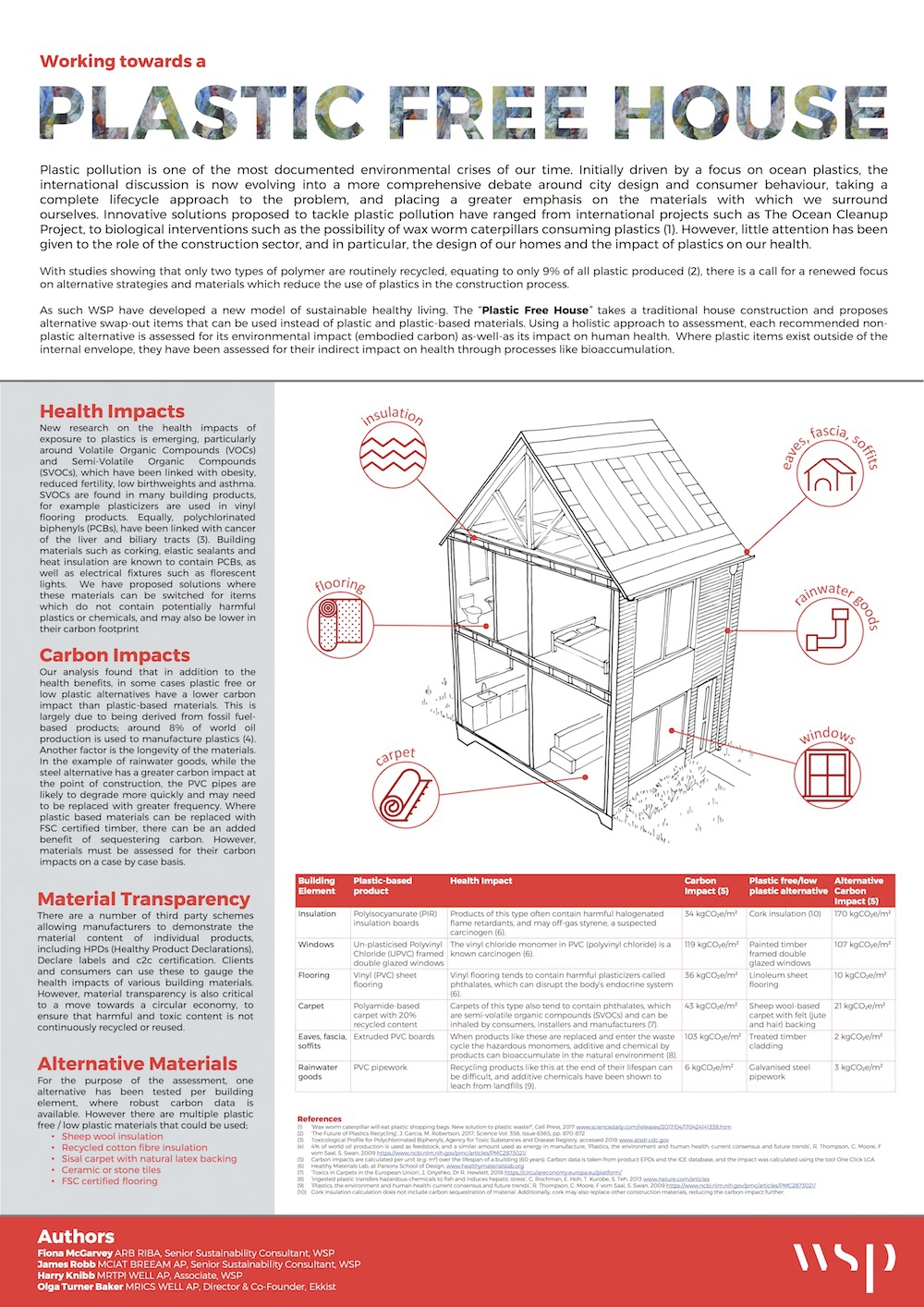Residential / Sustainability
The plastic-free house
By Harry Knibb, Olga Turner Baker, James Robb, Fiona McGarvey | 10 Oct 2019 | 0
This poster presents the outcome of a joint venture to develop a new model of sustainable healthy living.
Abstract
Arguably, the environmental crisis of our time, the problem with plastics has risen up the agenda rapidly in recent years. While many of us are doing our best, studies have shown that only 9 per cent of all plastic produced has ever been recycled. And concerns about microplastics making their way into the ocean and the food chain are abundant. New research on the health impacts of exposure to plastics is emerging, particularly around semi-volatile organic compounds (SVOCs), which have been linked to endocrine disruption, as well as obesity, reduced fertility, low birthweights and asthma. Worryingly, SVOCs are found in many building products; one example is plasticisers used in vinyl flooring products.
While it’s positive that the topic is gaining traction, we desperately need solutions. This poster presents the outcome of a joint venture to develop a new model of sustainable healthy living. The “plastic-free house” takes a traditional house construction and proposes alternative swap-out items that can be used instead of plastic and plastic-based materials.
Using a holistic approach to assessment, each recommended non-plastic alternative is assessed for its environmental impact (embodied carbon), as well as its impact on human health. Where plastic items exist outside of the internal envelope, they’ve been assessed for their indirect impact on health through processes such as bio-accumulation. A broad study has been adopted, with assessments undertaken of: doors; windows; insulation; flooring; waterproofing membrane; rainwater goods; damp-proofing; soffits and facias; fixtures and fittings; plastic plumbing pipework; and packaging.
The house is presented through an exploded image highlighting typical plastic components and their non-plastic alternatives, with each alternative being assessed against environmental and health criteria.
Organisations involved


